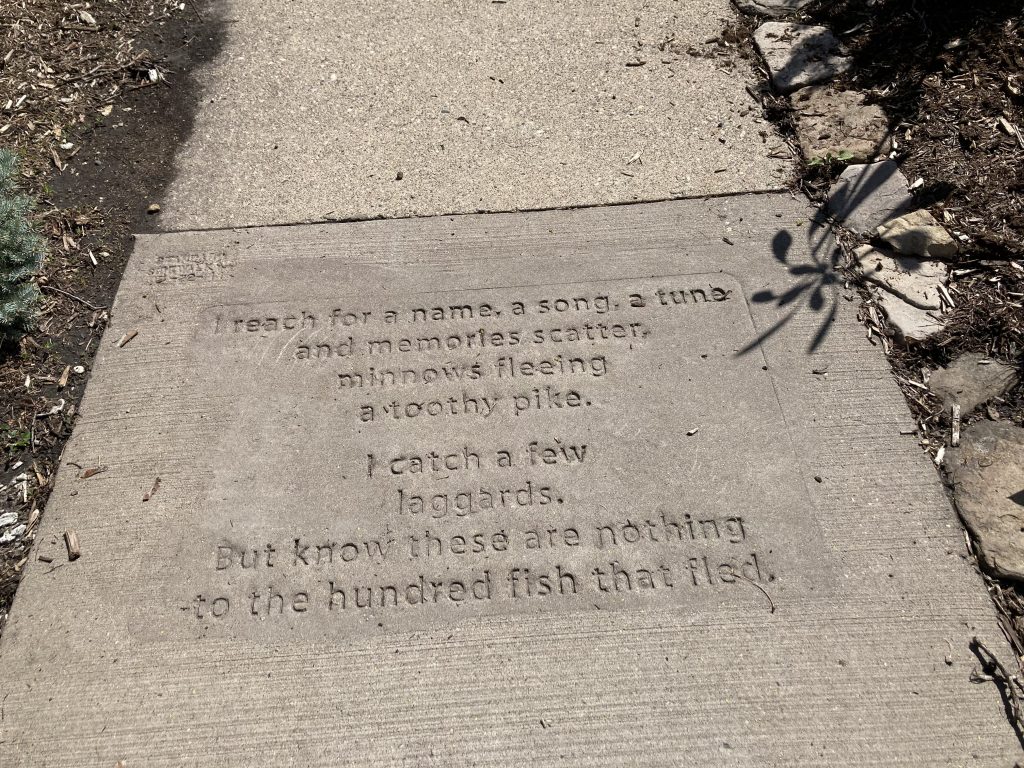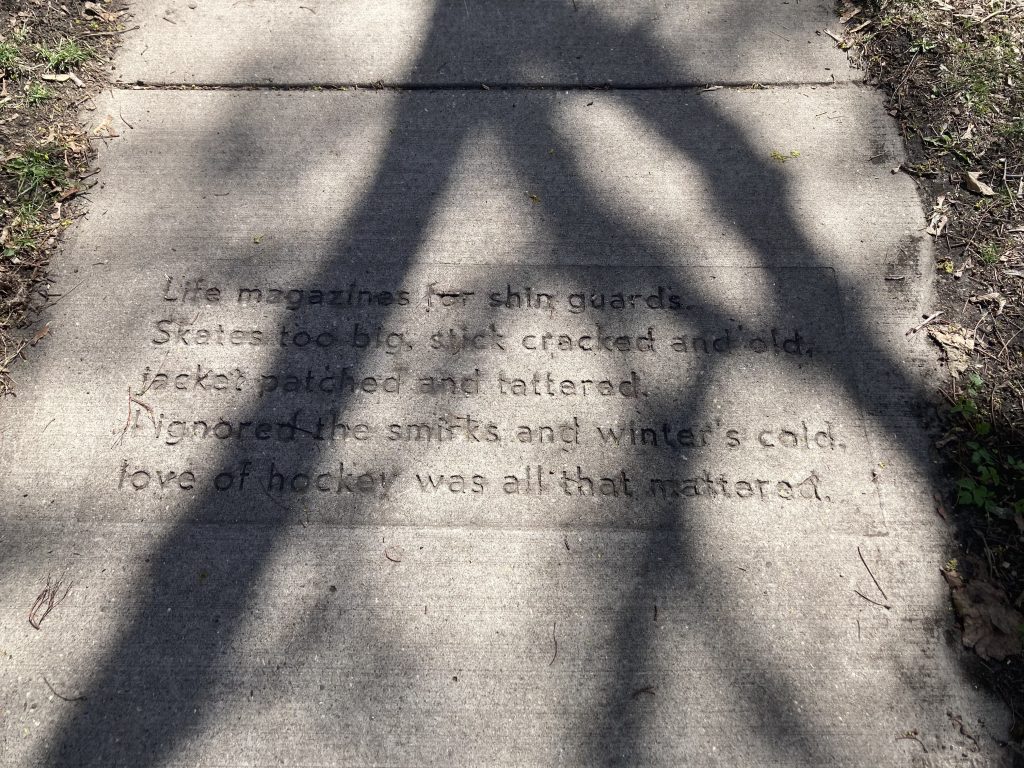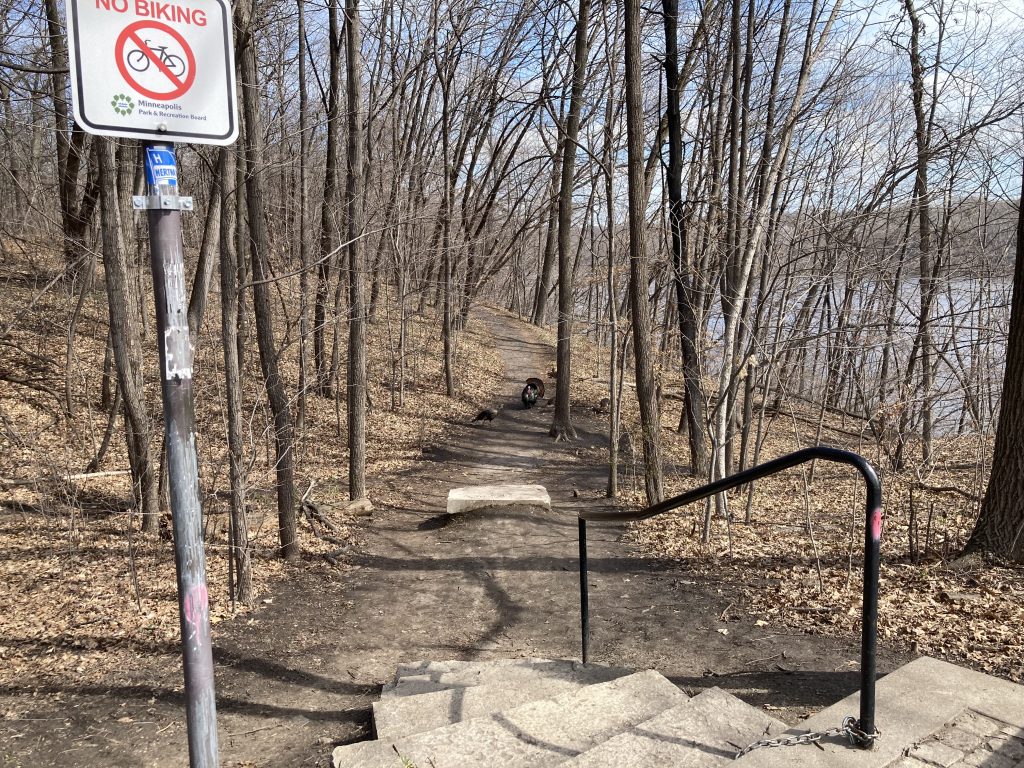10k
juno and finn, st. paul
44 degrees
A beautiful morning! Perfect temperature for running. Sun. Shadows. Hooray! Tried my new adventure: running to poems that are part of St. Paul’s Sidewalk Poetry project. Fun! Ran south on the west river road, up the hill to the ford bridge, north on the east river road, east on hartford, north on juno, east on finn. It took me a little while, but I found both poems — my navigating skills were not the greatest before my vision loss, but now they’re pretty bad. Difficult to read signs and hard to keep a map in my head. Made a few bad choices on the way back, and probably added an extra mile because of it. Oops.
First impressions — wow, these poems are really hidden — a nice surprise as you walk or run along. Also, there’s not enough contrast for my bad eyes. I couldn’t read the poems at all. I’m glad that you can look them up online because otherwise, I’d have no idea what they said.
Overall: great idea, but not that accessible. Also, how soon before these poems wear away? Even with my (small) criticisms, I love this project and am excited to run to some more!
This was a fun way to run a 10k — I was able to get a nice break in the middle and I was distracted from the effort by my task. Also, it’s good for me to practice navigating. I need to build up those skills so I can get out in the world to new places by myself more.
I wasn’t only focused on finding these poems. I also gave attention to the world:
10 Things
- kids at Minnehaha Academy, lower campus, were playing Red Light/Green Light. Green light . . . Red light.
- one gutted street lamp on the ford bridge — the one next to it was still on
- several streets with no sidewalks, or sidewalks only on one side in Highland Park
- bright blue river!
- a racket! geese honking beneath the ford bridge
- a bright white paddleboat near the shore on the west bank
- passed 2 park workers about to put fresh tar on the river road trail
- later, running over tar that was put down earlier in the week
- fee bee fee bee
- bright blue sky, cloudless
Sidewalk Poems — poem + my picture
1

Dementia/ Naomi Cohn (2008)
I reach for a name, a song, a tune
and memories scatter,
minnows fleeing
a toothy pike.
I catch a few
laggards.
But know these are nothing
to the hundred fish that fled.
2

Untitled/Louis Disanto (2011)
Life magazines for shin guards.
Skates too big, stick cracked and old,
jacket patched and tattered.
I ignored the smirks and winter’s cold,
love of hockey was all that mattered.
A note about this second poem: This is not the poem that is supposed to be here, according to the map.
earlier today
While drinking my coffee, I read about different places along the river to view birds during the migration and found this line:
You can also see a whole hillside of the spring ephemeral bloodroot along the trails near 36th Street.
Must-see FMR spring birding sites along the river
Bloodroot? What’s that, and why is it called bloodroot? This was a useful site for answering my questions.
- an herbaceous perennial native to eastern North America, from Florida up into Canada
- found in undisturbed woodlands, on flood plains and on slopes near streams or ponds
- the reddish sap that exudes from all parts of the plant, but especially the root, when cut is what prompted the common name of bloodroot
- used as a natural red or yellow-orange dye
- the brilliant white – or rarely light pink – flowers up to 2 inches across open in early spring. The blooming period lasts about 2 weeks
- each flower stalk produces a solitary flower with a number of delicate, elongate petals surrounding the numerous yellow stamens and central green pistil, with a pale yellow, two-lobed stigma at its apex. The flower usually has eight symmetrically arranged petals, with four large petals and four smaller ones
